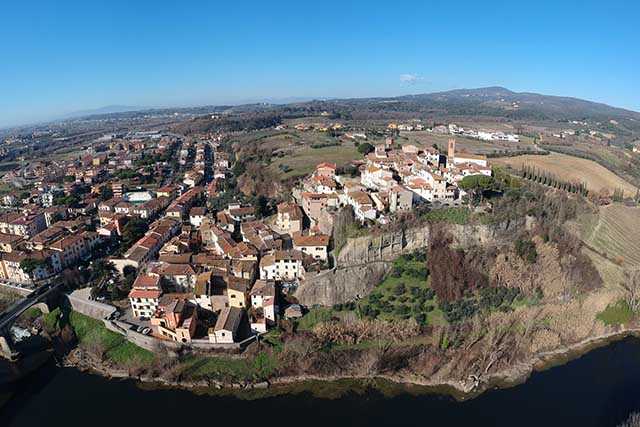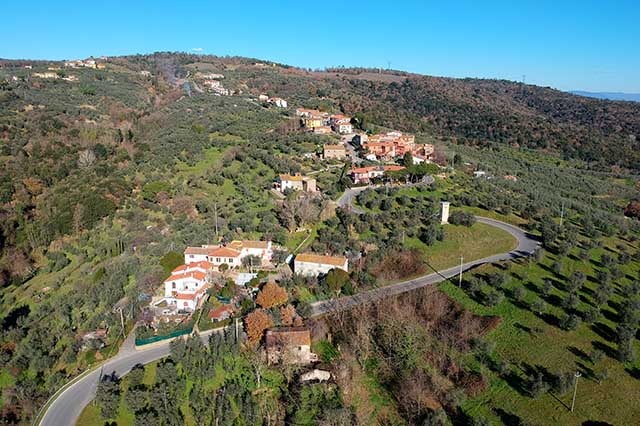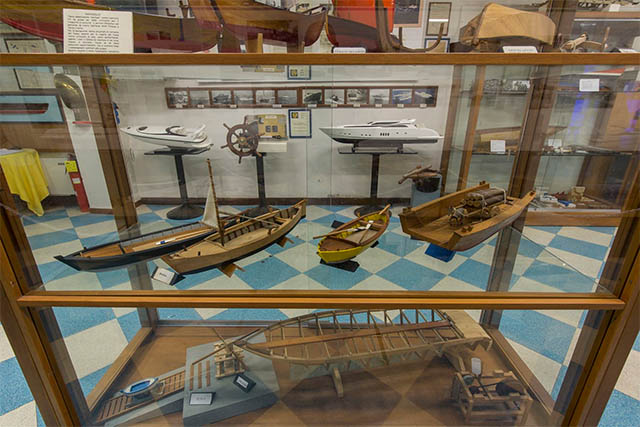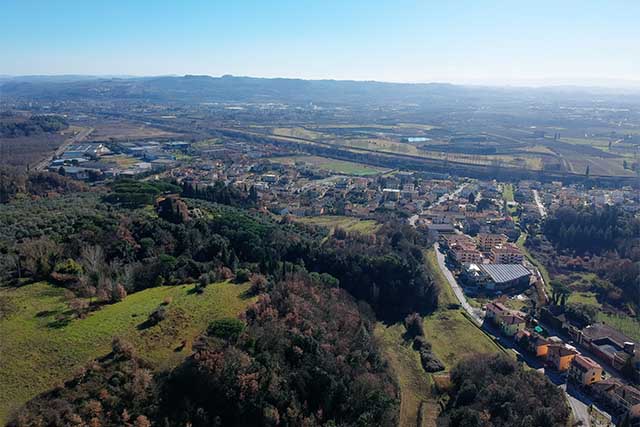Municipality of Capraia e Limite
Capraia appears frequently in Leonardo's papers. Leonardo depicts it properly, in the form of a well-fortified castle, strategically situated on a spur overlooking a bend of the Arno, shortly after the gorge La Gonfolina. The ancient castle of the Counts Alberti had been one of the most contested strong points of the Valdarno, not only for its position in control of the river, but also for its placement on the border of territories divided among potentates and cities. The rock formations that Leonardo observed along the course of the Arno near Capraia are accurately described and explained in several passages of the Codex Leicester.
Among the castles of eastern Montalbano drawn by Leonardo figures also the small town of Castra. Leonardo must have seen it still in the form of the fortified shelter that was called, in written sources from the 13th century, Castrum Castri Vallis Arni, or the "Castra castle of the Valle dell'Arno," while the nearby village of Conio was still defined as an open village (villa). During Leonardo’s time, the inhabitants of the small town of Castra, who could take advantage of the forests of Montalbano, replenished wood supplies for the activities of the ferrymen of Castellina and of Limite sull'Arno.
Leonardo lived along the banks of the Arno since boyhood, when he went down from Vinci to the town of Limite, on the right bank of the river. Here he had the opportunity to observe the typical boats for navigating the river, of the same type depicted in one of his folios in the Codex Atlanticus. On the banks of the Arno, Leonardo would also have been able to observe the master carpenters at work on the construction sites at Limite. The Limite exhibition center preserves the memory of the activity of the master hull workers,, which developed during the 15th century.
In Leonardo’s maps dedicated to the Valley of the Arno, we can clearly recognize the deep bend of the river that flowed along the settlement of Limite and the turreted village of La Castellina. These places have a very ancient origin, but Leonardo fixed in time the image of the Arno at the moment when the river's conformation had made possible the development of the two villages. La Castellina was still a castle surrounded by the walls with which it had been fortified during the Late Middle Ages. Limite was then on the way to development owing to the activities of the master hull-working craftsmen, then flourishing on the right bank of the Arno.








